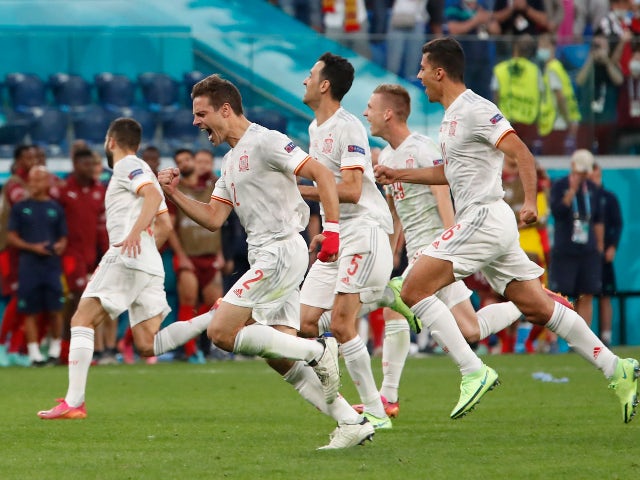Spain's Euro 2020 quarter-final win over Switzerland means there have been 50 penalty shootouts in European Championships and World Cups going into this summer's semis.
Should they, Italy, England or Denmark need another, strategy will be all-important along with the ever-present element of luck.
Here, the PA news agency looks at what can be learned from previous shootouts on the big stage.
First or second?

The first decision to be made is by the captain who wins the toss, allowing his team to decide whether they want to shoot first or put their opponents in.
The traditional view is that going first is an advantage, allowing you to build the pressure on your opponents, and Switzerland's win over France and subsequent defeat to Spain have borne out that theory with the winning team on each occasion taking the first kick.
However, before the current tournament, only one of the previous nine shootouts dating back to the 2014 World Cup had been won by the team going first – Portugal's Euro 2016 quarter-final win over Poland.
The overall figure suggests little effect, with this summer's two results narrowing the margin to 26-24 in favour of the team kicking second.
If it goes to sudden death, though, the next penalty has been missed 50 per cent of the time, while the team going second have scored their sixth penalty seven times out of eight.
The psychological effect

Having the skill to strike a perfect penalty is one thing, but the mental strength to execute it under pressure is another – especially when it comes down to the decisive kick.
Psychologist Dr Greg Wood told PA before England's clash with Germany that anxiety is one of the key factors in an unsuccessful penalty, shifting a player's attention away from their target and towards the goalkeeper, and that is borne out with the game on the line.
While the overall conversion rate rises from 73.8 per cent to 91.9 per cent with the chance to be the match-winner, it falls to 61 per cent when a player must score to keep his side in the game – and further still to 54.5 per cent, 18 out of 33, when that situation arises in the regulation 10 penalties rather than sudden death.
And there appears to be a build-up of tension if a team repeatedly goes to penalties. Since Argentina won their 1990 World Cup quarter-final and semi-final on spot-kicks, no team has won back-to-back shootouts in a single tournament – other than Croatia in the 2018 World Cup, whose opponents Russia had also gone to penalties in the previous round.
Switzerland have provided the latest example of that phenomenon, which also accounted for both France and England at Euro 96, Spain at the 2002 World Cup and Poland at Euro 2016 and played out most enjoyably at the 2014 World Cup – when Costa Rica beat Greece on penalties but lost a subsequent shootout to Holland, who in turn were beaten on penalties by Argentina.
How to line up your takers

Conversion rates are similar throughout the shootout, between 73 and 80 per cent, with the exception of each team's fourth kick – converted 70 per cent of the time for the team shooting first and a dismal 57 per cent, 27 out of 47, when going second.
If that kick requires a strong-willed player, there are opportunities to 'hide' your less confident takers.
The team shooting first can often get away with missing their second penalty – of 12 to do so, five have won the shootout anyway. All 11 to miss their fifth kick when taking first have been eliminated, albeit in what is often a de facto sudden-death situation.
When taking second, the numbers play out differently and the third kick is the least costly to miss – five of 13 such teams have gone on to win. In contrast to teams shooting first, only two of 12 have survived after missing their second kick.









